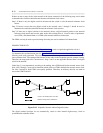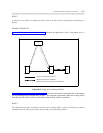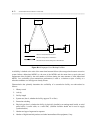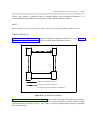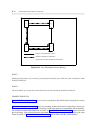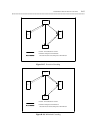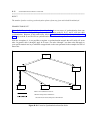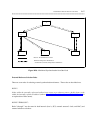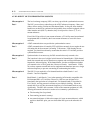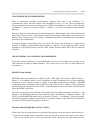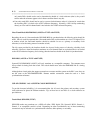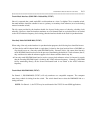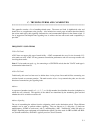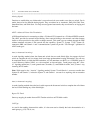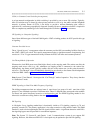B-28 SYNCHRONIZATION OF DIGITAL FACILITIES
_ ___________________________________________________________________________________________________________________________
_ ___________________________________________________________________________________________________________________________
_ ___________________________________________________________________________________________________________________________
AVAILABILITY OF SYNCHRONIZATION SOURCES
Misconception 1 The local exchange company (LEC) can always provide the synchronization source.
Fact 1 The LECs are not always subscribers to the AT&T reference frequency. Many end
offices still use analog switches and D4-channel banks. In the past, these channel
banks have not had to be synchronized and probably have not been equipped with an
office interface unit (OIU-2); therefore, they do not provide a lower- (3, 2, or 1)
stratum reference.
Even if the CO provides a lower stratum reference, a T1 facility must be terminated
in equipment that is clocked by the lower stratum reference to access this lower
reference.
Misconception 2 AT&T communications can provide the synchronization source.
Fact 2 AT&T communications is bound by FCC tariffs that currently do not require the use
of framing bits in the customer’s incoming T1 bit stream. Until framing bits are
required, you should not arbitrarily assume that the carrier’s T1 facilities provide a
synchronization source.
Misconception 3 Synchronization is not necessary for DS1 networks that only transmit voice.
Fact 3 The issue here is the use of a digital switch instead of channel banks. With channel
banks, the transmit and receive functions are separate and could have different clock
frequencies without slipping. With channel banks, it makes no difference whether
you transmit voice or voice-grade data. However, Generic 1 and Generic 2 DS1s
do not have separate transmit and receive equipment and therefore must use a single
reference frequency to prevent overrunning or underrunning the buffers.
Misconception 4 The OIU-2 is not required in a D4-channel bank since both Generic 1 and
Generic 2 are D4 compatible.
Fact 4 Both Generic 1 and Generic 2 are (when operating in D4 mode) compatible with
D4-formatted DS1 or T1 facilities. However, a DS1 was not designed to be
functionally the equivalent of a channel unit. D4-channel banks, as described in
Fact 3 above, use line-powered oscillators to provide their clocking. Given the
normal drift in an AC line, the transmit frequency of a D4-channel bank can vary
significantly. The OIU adds a stratum-4 clock to the common equipment of a D4,
allowing the transmit and receive sections to be commonly synchronized to:
• The incoming line (loop timed)
• Free-running (stratum 4 accuracy)
• An external reference (a link to the output of a lower stratum reference), which
applies to both DS1 span; you can select either DS1 span as the reference for
both



